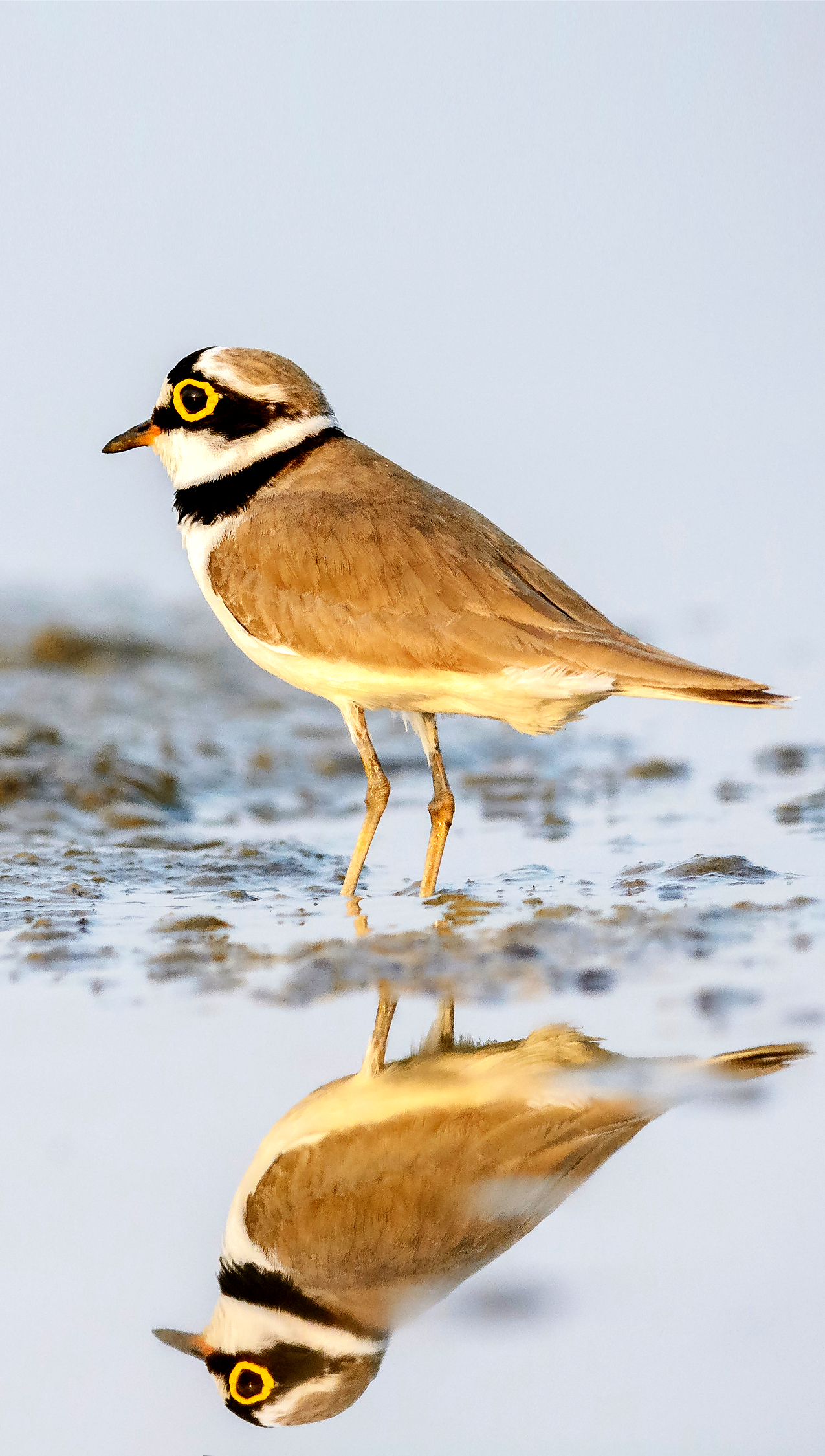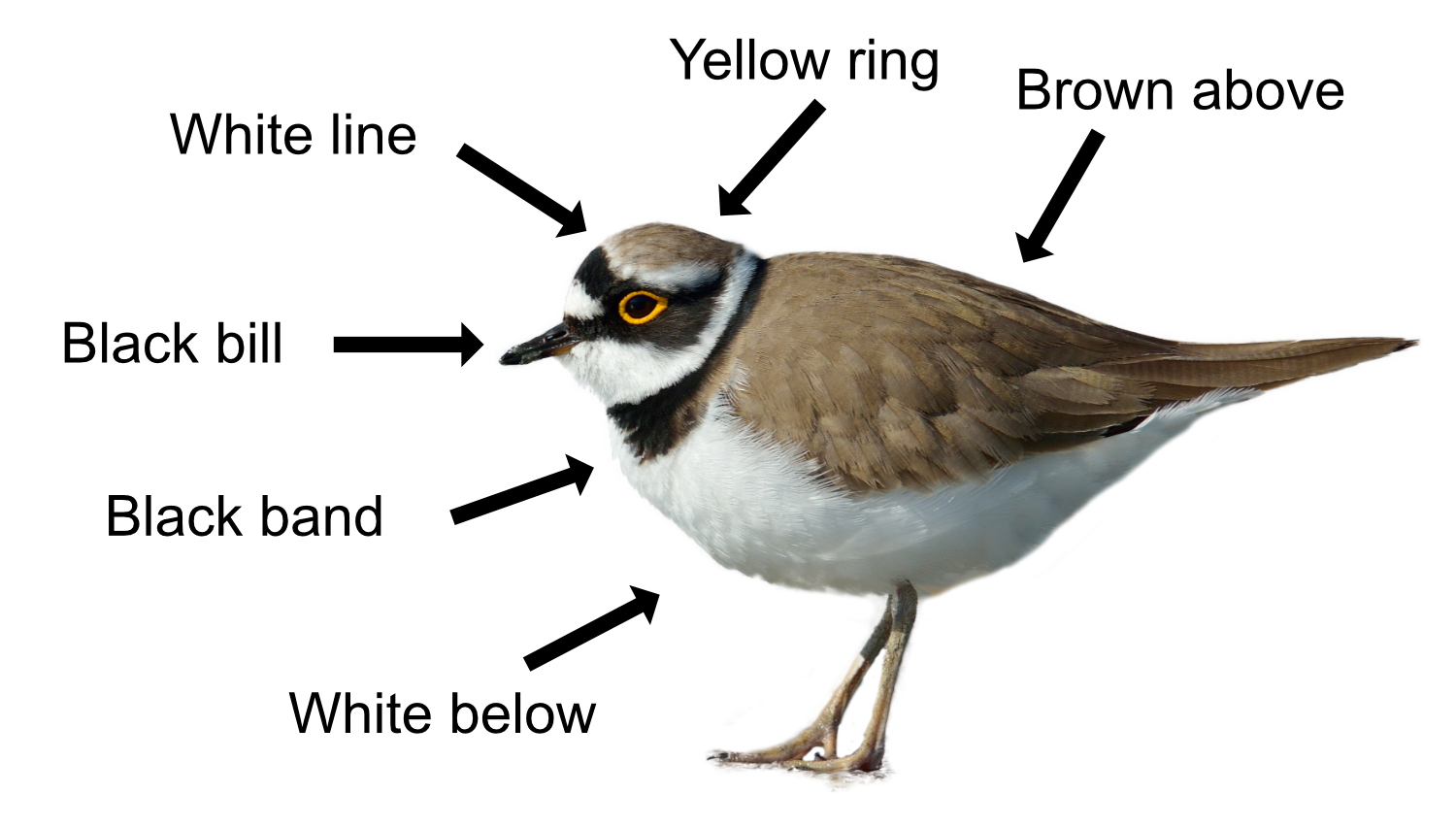
Little Ringed Plovers are aptly named as they are - little. They first nested here in 1938 and have successfully spread through England and Wales, helped by man-made flooded gravel pits, reservoirs and quarries which provide them with perfect breeding grounds. They are a summer visitor arriving from Central Africa in March and leaving again in August.

Daintier than the Ringed Plover, the Little Ringed Plover has a black bill, pale, creamy-brown legs, and a bright yellow ring around its eye. It is sandy-brown above and white below, with a black chest-band and black ‘bridle’ markings on its head. There is no visible wing bar in flight and they call with a flutey "peeoo". You rarely see them in flocks, except during migration. From a distance, the black bill is easier to tell them apart from a Ringed Plover, rather than the hard to see eye-ring.
Little Ringed Plovers have a similar run-stop-tilt-stand feeding action to other plovers, but it is much more rapid. It feeds on insects and small creatures found in or close to shallow water. Things like spiders, beetles, flies, dragonflies, mayflies, freshwater shrimps, worms, and water snails.
They rarely breed by the sea, preferring shingle banks close to freshwater. Their bold patterning acts as disruptive camouflage, breaking up their outline against the stones. The male makes several scrape nests on the bare ground and displays with slow wing beats in a zigzagging butterfly flight. The female picks one and lays 4 eggs which hatch after 24 days. Both mum and dad incubate the eggs. The youngsters can feed themselves almost immediately and fly 25 days later but remain dependent on mum and dad for a further month. Occasionally, there are two broods. Most Little Ringed Plovers leave their breeding grounds in early July, migrating back to Africa between July and August - a huge journey for something so small! Adults do their moult between July and November, some starting before migrating and finishing once back in their winter grounds.
There are about 1,200 nesting pairs of Little Ringed Plover, mainly found in lowland Britain. The oldest recorded was 9 years old. Those long journeys wear you out.
Their Latin name is 'charadrius dubius' where 'charadrius' is a Latin word for a yellowish bird derived from the Ancient Greek 'kharadrios' for a bird found in river valleys (from 'kharadra' for 'ravine') and 'dubius' is Latin for 'doubtful', since Sonnerat, writing in 1776, thought this bird might be just a variant of the Ringed Plover. He was, of course, completely wrong.